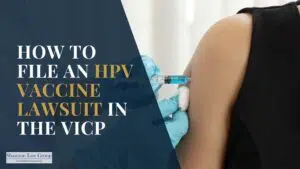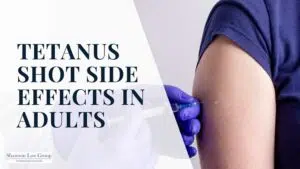
Brooke Melton was a 29-year-old pediatric nurse. One night after completing her shift, Brooke got into her 2005 Chevrolet Cobalt and headed to her boyfriend’s house to celebrate her birthday over dinner.
On her way, the ignition switch of Brooke’s Cobalt failed, the car stalled, and Brooke lost control of the vehicle. She crossed the centerline of the road, where she was struck by another car and was killed.
Brooke’s family filed suit against General Motors, the manufacturer of the Cobalt. During the course of litigation, it was discovered that over 2.6 million GM cars suffered from the same defect as Brooke’s Cobalt.
The ignition switches on certain GM vehicles had a defect that allowed them to slip from the “on” position to the “accessory” position, causing the entire vehicle to shut down, including its engine, power steering, and brakes. The defect also caused the vehicle’s airbags to be disabled.
Incredibly, during the course of the investigation, it was discovered that GM knew of the fatal ignition switch defect as early as 2001. However, they decided not to correct the defect because the solution would add 57 cents to the cost of each car.
Ultimately, the work of the attorney and the engineers Brooke’s family hired helped spur a massive recall, which included millions of Chevrolet, Pontiac, and Saturn vehicles. These discoveries, many of which came to light during depositions conducted in the Melton lawsuit, led to a 2014 recall of millions of GM vehicles and caused the launch of a Congressional investigation into GM’s behavior.
Products liability cases keep the general public safe from faulty vehicles
This is just one example of how the civil justice system, and products liability litigation specifically, has served as an effective and powerful mechanism for protecting consumers.
Industry safety groups, like the National Highway Traffic Safety Administration (NHTSA), exist to provide regulations to protect consumer safety. However, the automobile manufacturers’ lobby is large and powerful.
They have repeatedly and regularly taken steps to delay and water down NHTSA’s responses to automotive safety concerns. Courts have consistently recognized that NHTSA alone cannot protect consumers, and typically regard NHTSA regulations as a floor, rather than a ceiling.
Products litigation prompting safety advances in the automobile industry can be traced as far back as the 1960s. In what became the subject of Ralph Nader’s 1965 book, “Unsafe at Any Speed,” a lawsuit arose out of a 1964 accident involving a Michigan man who was involved in a head-on collision while driving a Chevy Corvair.
The steering mechanism of the Corvair was thrust backward during the collision, ramming the steering wheel into the driver’s head. In that case, GM claimed it had no duty to design a car that would protect an occupant in the event of an accident.
In a landmark decision, the court rejected GM’s claim, sending the first clear message to automakers that they need to consider the crash safety of their vehicles. Manufacturers now had a directive from the courts that they could no longer ignore safety.
Holding Auto Manufacturers accountable when they put profits before people
Less than a decade later, Ford was found to have known about a defect which led to one of its vehicles bursting into flames during low-speed rear-end accidents. Ford also had done nothing to correct the problem before taking the vehicle to market.
Internal documents, which were unearthed during the litigation, revealed Ford knew that the Pinto’s gas tank was left unprotected, and knew it could lead to fires and explosions during a collision.
Even more egregious, it was determined that Ford could have fixed the problem for as little as $11 per vehicle, but calculated that it would be more profitable to sell the car as-is, even considering the amount of money it would pay to victims who would be injured or killed by the defect.
Astonishingly, the Pinto’s design met all of the applicable federal government standards at the time. Many auto lobbyists have proposed changes to product liability law in which compliance with federal standards would be a complete defense to product liability claims.
However, this case serves as just one example of how such a rule could result in a manufacturer not being held responsible for accidents and problems the manufacturer itself anticipated and predicted.
Auto Manufacturers often believe litigation is cheaper than fixing the defect
In a similar case, Chevrolet opted not to remedy a defect in the “side saddle” gas tank design of its Malibu vehicles, when the remedy would have cost GM less than $9 per car. GM determined that paying an anticipated 500 victims of fatal accidents would cost only $2.40 per car, and it was, therefore, cheaper to let people burn in their vehicles than to fix the problem.
Now, due in part to the litigation that brought many of these facts to light, gas tanks are almost all located within a car’s rigid frame, and most vehicles designed today are capable of absorbing impacts at speeds of at least 50 miles per hour.
Similarly, automobile manufacturers have been developing the technology used in airbags since at least the 1950s and have been testing that technology since at least the 1960s.
However, by 1988, only 2% of new cars were equipped with airbags. These facts gained recognition in a 1991 case involving a 19-year-old college student from New Hampshire, who was killed in a collision in her 1988 Ford Escort, which was not equipped with an airbag.
The student’s family filed one of what became more than 100 suits alleging car manufacturers knew that the absence of airbags resulted in thousands of avoidable deaths every year.
More recently, defective Firestone tires on Ford Explorers lead to at least 271 serious injuries or deaths. Ultimately, the accidents and litigation that ensued led to the largest tire recall in history.
Documents uncovered during the course of the litigation revealed that both Firestone and Ford had known as early as 1997 about a defect causing tire separation and rollover problems. Vehicle owners were sending complaints of tire failures at a rate 100 times greater than normal.
During the investigation, Firestone employees admitted that they punctured bubbles in tires to conceal flaws and that the finished tires were never properly inspected before hitting the marketplace. Michelin, Cooper, and other tire manufacturers have also taken corrective action to fix unsafe tires as a result of litigation.
Hurt by a defective product? Contact us today.
The impact of litigation on product safety is not limited to the automobile industry. For decades, our civil justice system has helped to make many of the products we use safer.
At Shannon Law Group, we have handled product liability cases involving many different types of products, including car and farm machine defects. If you have a question about a defective product, you should contact our attorneys today at (312) 578-9501. We offer free case evaluations.
Schedule Your Free Consultation Today



